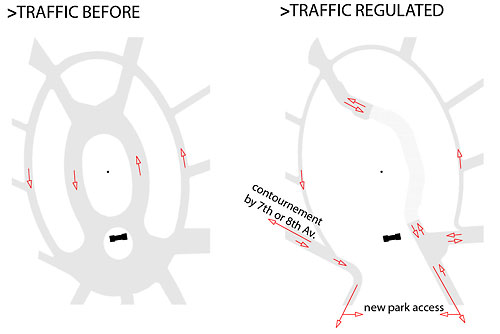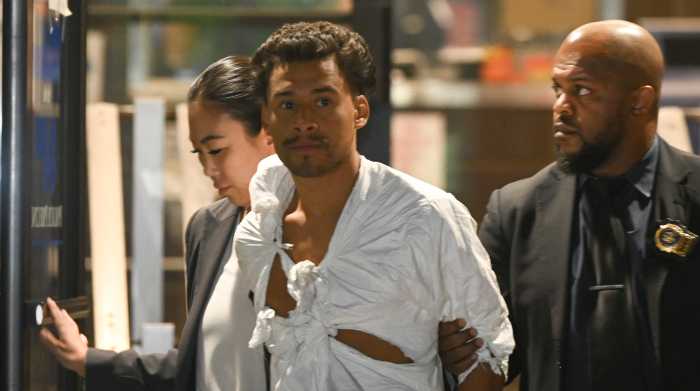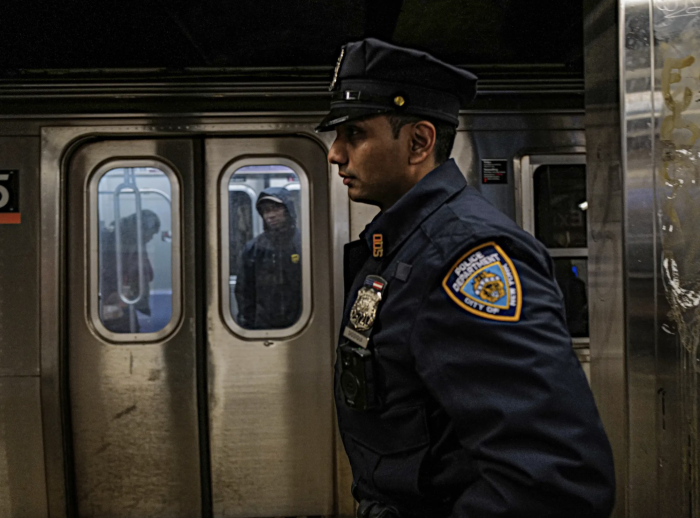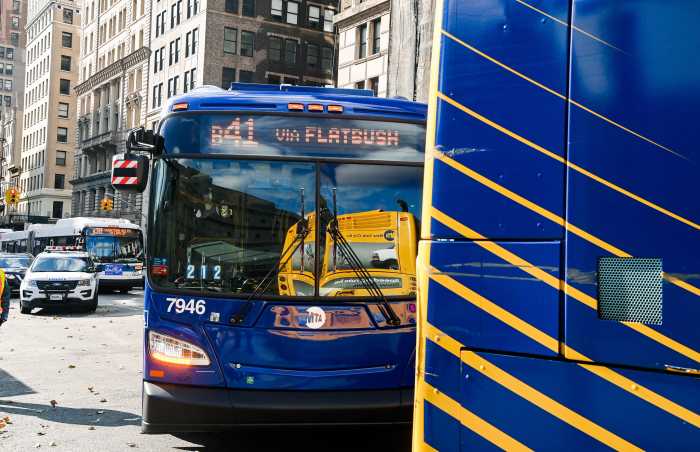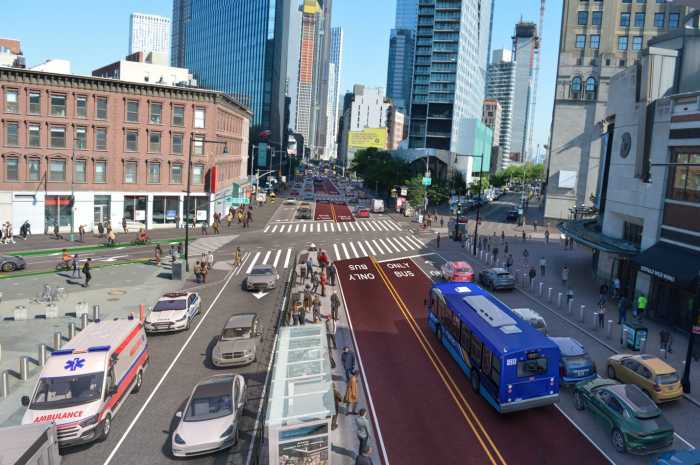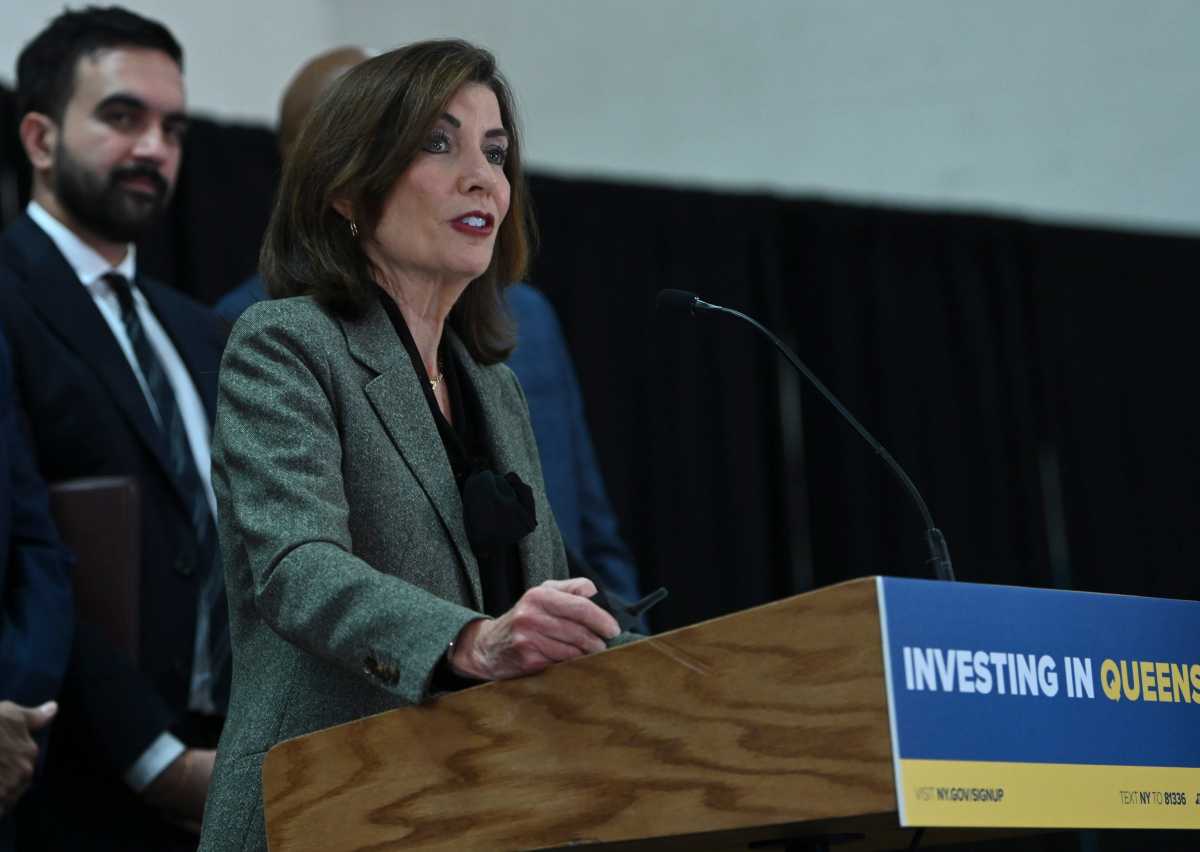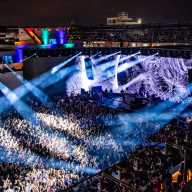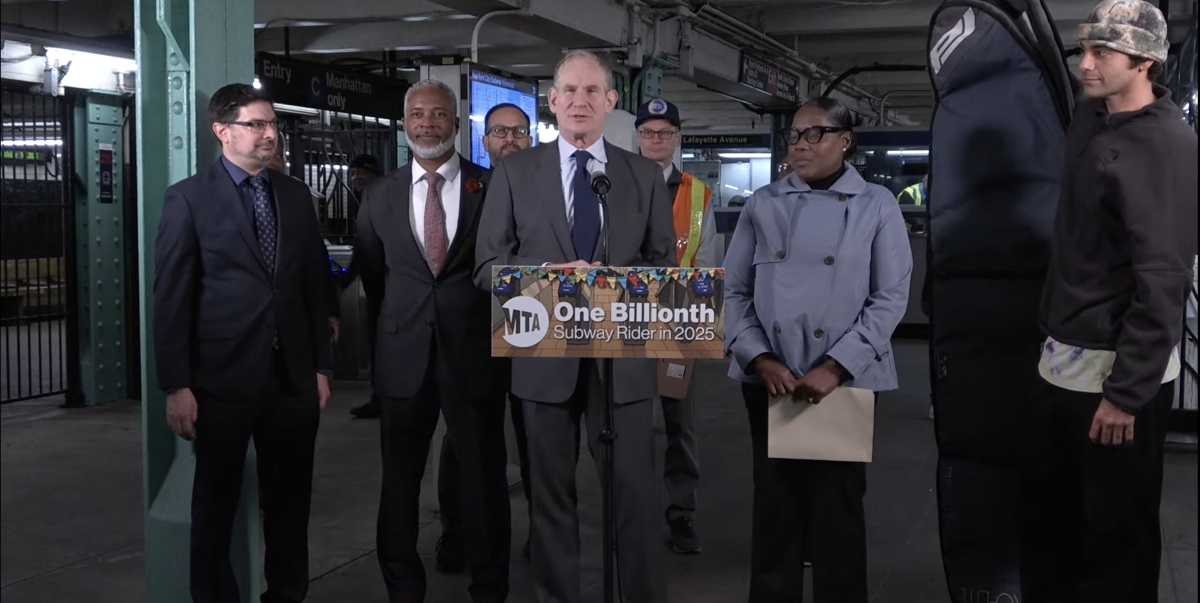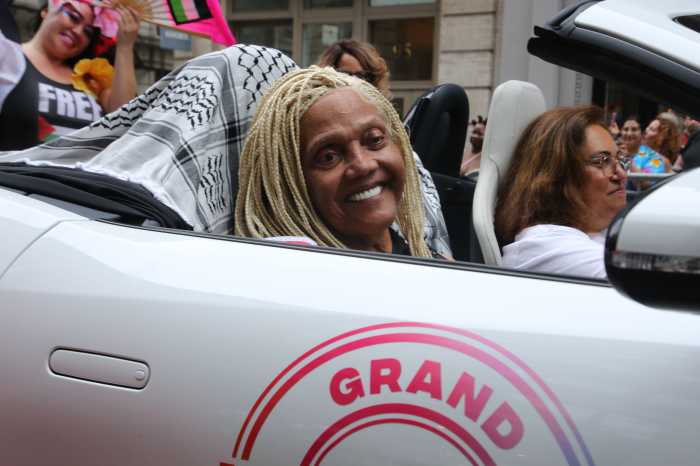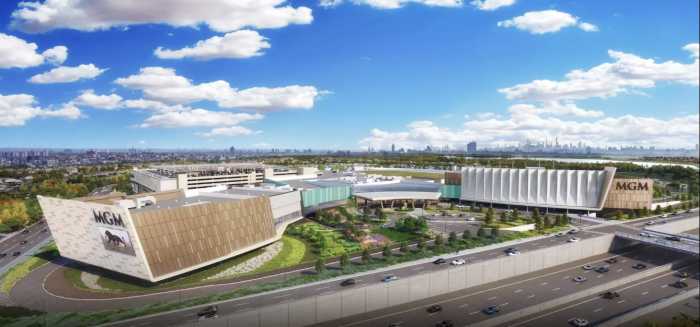The public has spoken: Grand Army Plaza should be completely transformed to once again connect it to Prospect Park, bury Flatbush Avenue underneath a land bridge, and make pedestrians, not cars, the dominant users.
That’s what the creators of the winning design in the month-long competition, “Reinventing Grand Army Plaza,” think must happen if the clogged and dangerous traffic circle in the heart of Brooklyn is to finally live up to its heroic name — and a plurality of more than 2,000 voters in the competition agreed.
The four-person French team that crafted the scheme, dubbed “Canopy,” believe that fixing Flatbush Avenue is the key to the larger problems of the circle.
“The issues were quite challenging,” said Christian Matteau, a member of the winning team. “This is a no-man’s land, so we wanted to bring people here to the middle, and to neutralize the traffic situation.”
As a result, Flatbush Avenue, currently a speedway whose north- and southbound lanes are separated by the Soldier’s and Sailor’s arch and the Bailey Fountain in the center of the circle, would be reimagined as a two-way street on the eastern side of the circle.
Most of the portion of Flatbush Avenue within Grand Army Plaza would be covered with an earthen bridge so that pedestrians could move about freely. The entire western part of the circle, where the southbound lanes now sit, would be public space.
Meanwhile, Union Street would no longer directly connect to Eastern Parkway. That area would be off-limits to cars — reconnecting Prospect Park to the plaza, which was Olmsted and Vaux’s original idea.
Despite winning the public vote, “Canopy” stands little chance of ever being implemented.
“The contest wasn’t intended for a design to be constructed,” sniffed Scott Gastel, a spokesman for the Department of Transportation, which is conducting traffic studies as part of its own plan for the plaza.
“The competition has produced some very interesting concepts, which we will bear in mind as we continue to think about the future of Grand Army Plaza,” he said. “We’re still looking into the designs [to evaluate their feasibility].”

Feasibility was not on every design team’s mind. One scheme, called “Splat,” would have elevated the entire plaza above Flatbush Avenue. It resembled a hovercraft or, as one skeptic pointed out, Montreal’s Olympic Stadium plunked down in the middle of Brooklyn.
For more than a month, nearly 2,000 visitors braved Flatbush Avenue to enter the center of the circle to inspect all 30 finalists in the competition, which was put together by the Design Trust for Public Space and the Grand Army Plaza Coalition.
The design competition was part of the larger goal between the Design Trust and the Coalition to create a master plan to redesign the plaza.
In the next few months, the Coalition will host a series of community meetings to discuss what should be done.
As the proposals move forward, the Design Trust will lobby the city to get the project done.
“Ultimately this is a community-based effort, and so we’re especially interested to go back and say, ‘OK, what do you think,’ and take it from there,” said Grand Army Plaza Coalition Vice Chairman Michael Cairl.
And while the designs are largely pie-in-the-sky ideas, the final plan that gets implemented by the city will most likely have some little bits that were first brought to light in this design competition, said Deborah Marton, the Design Trust’s executive director.
Marton called upon city bureaucrats to show the same spirit and imagination that the competition entrants used — after all, nothing is impossible.
“Some aspect of every scheme is feasible, so the question is what elements should be called out and studied more in depth,” she said.
“The competition served a great question of what can be done here with multiple answers, so now the question is how do we do it.”
